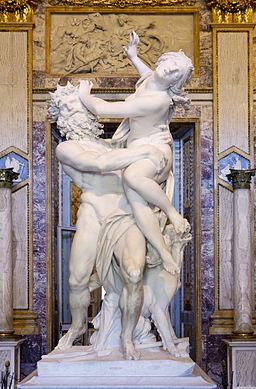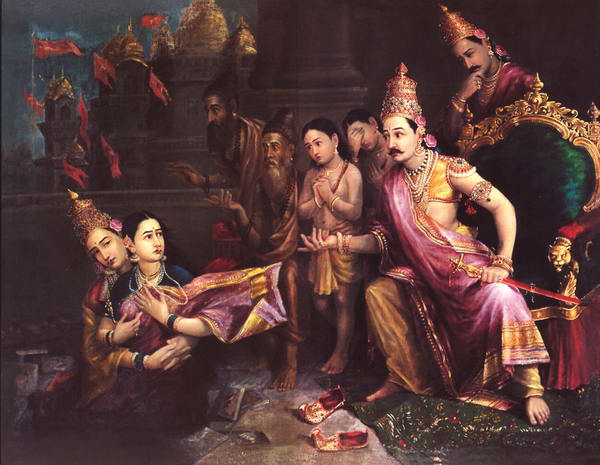I’ve always loved the story of Persephone in Greek mythology. You may be less familiar with the Ramayana and the story of Rama and Sita. Despite coming from vastly different cultures, there are a surprising number of parallels between Persephone and Sita.
Early Life
Similar to Demeter, who is a harvest or agriculture goddess, Sita’s mother is Bhumi, the Earth goddess. Fostered by a king and queen who are her human parents, Sita still knows who her mother is.
Sita chooses Rama from her many suitors, in what one might argue is one of her last independent choices. Everything seems to be going well for them until Rama’s stepmother forces his father to banish Rama from the kingdom. Ever a loyal wife, Sita accompanies her husband and one of his brothers into exile.
Abduction
Insta-love is not only a problem in modern YA. Hades and Ravana had that particular market cornered long before Bella met Edward.


The demon king Ravana kidnaps Sita from her forest hut after tricking Rama and his brother into leaving her. According to mythology, while he carries her off to his palace, he can’t touch her against her will. Sita’s body remains safe from Ravana so long as she doesn’t consent.
The violent abduction of Persephone is a well-known and disturbing element of the original myth. Worse, her father Zeus is complicit in her kidnapping, for he aids Hades in setting his trap.
Kidnapping and Stockholm’s Syndrome aside, Persephone grows to truly love Hades, though she remains homesick for her mother. Demeter remains staunchly unforgiving of Hades.
Both Persephone and Sita wander the palace grounds of their kidnappers. Persephone eats the infamous pomegranate seeds, while Sita sleeps under the only tree to survive the burning of Lanka.
While Rama goes to battle against Ravana to retrieve his wife, Demeter beseeches Zeus and the other gods to get Persephone back. She goes on a rampage to find those responsible, but, as per usual, Zeus escapes punishment unscathed.
Return
While Sita and Rama are overjoyed to be reunited, Rama’s subjects turn out a bit less enthusiastic. Sita subjects herself to a purity test by fire to demonstrate her loyalty to her husband despite having lived—against her will—in Ravana’s palace.
But her misery doesn’t end there. Bowing to pressure from his subjects, Rama eventually banishes her to a sage’s ashram, where she gives birth to his twin sons. In another tragic Greek twist that invokes Oedipus, the young princes grow into powerful warriors, eventually defeating the arrogant nobleman who insulted them. When they bring their mother their enemy’s helmet, she recognizes Rama’s armor. The family is reunited once again when Sita reveals his sons to Rama.
But when his subjects continue to question Sita’s purity, she gives up on her hopes for earthly happiness. She invokes her mother, who opens up the earth to embrace her daughter and take her away forever.

Maybe Sita found literal earthly happiness after all …. I’ve never understood why Rama, who was so eager to get her back and who was so distraught upon finding her gone, refused to speak up for her to his people. Fighting demons is all well and good, but he let others tarnish her reputation without defending her. In this painting by Varma, Rama’s expression of shock and Sita’s resigned disappointment may describe their entire relationship.
Thanks to eating the cursed pomegranate seeds, Persephone’s return to her mother is a hard-driven bargain. She splits every year between the Underworld and her mother’s kingdom.
Misogyny in Sita Iconography
His teacher requested that I tell my son’s class the story of Diwali, so I opened with the Ramayana. I wanted to give the children some visual guides and found something troubling. Individual pictures of Rama, Hanuman, and Ravana are easy to come by. But what about Sita, who spent much of her life alone, first in exile in the forest, then isolated in Ravana’s palace, and finally in the ashram where she raised her sons?
I couldn’t find any recognizable pictures of Sita by herself. She is always portrayed alongside one of the male figures in her life. The same men that stole her autonomy are always present with her, despite the fact that her actual story is a lonely one.
Persephone faces similar challenges. Both her father and her uncle conspired together for Hades to capture her and then to keep her in his realm. But at least plenty of Greek and modern art depicts Persephone by herself.
Final Thoughts
Although Hinduism describes Rama as the perfect god-king, his support for his beloved wife leaves a lot to be desired. Sita deserves better.
While Hades’s abduction of (his niece) Persephone doesn’t portray him in the best light, he does remain faithful to her. He also doesn’t demand the same from her: Persephone takes the mortal Adonis as a lover for at least a little while.
Did you find other parallels between Persephone and Sita that I missed?
